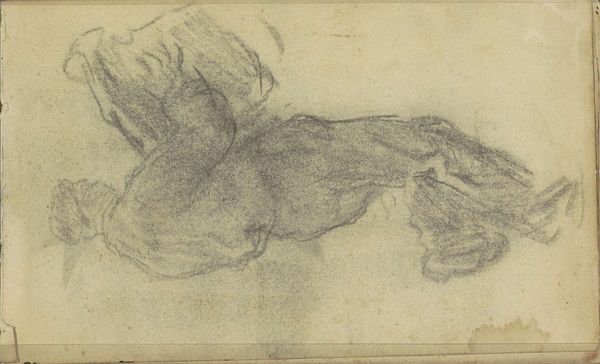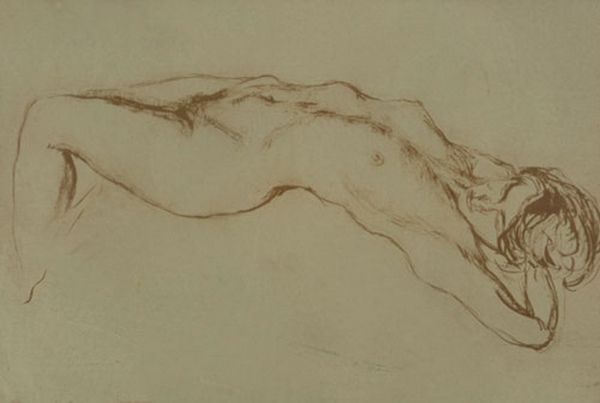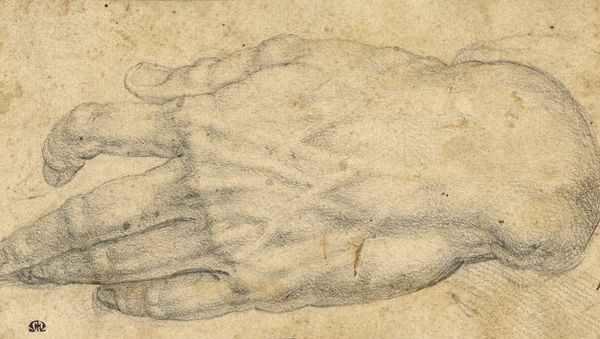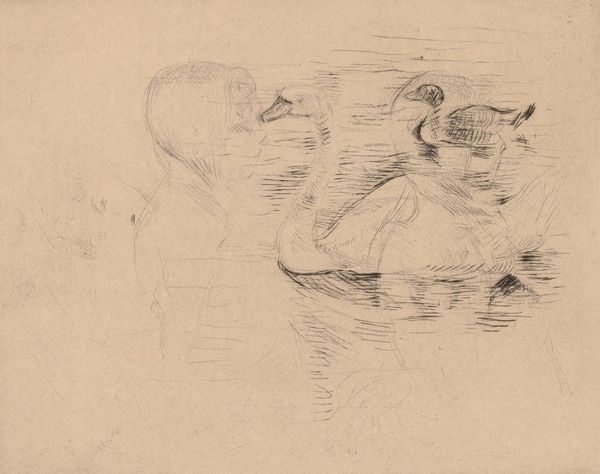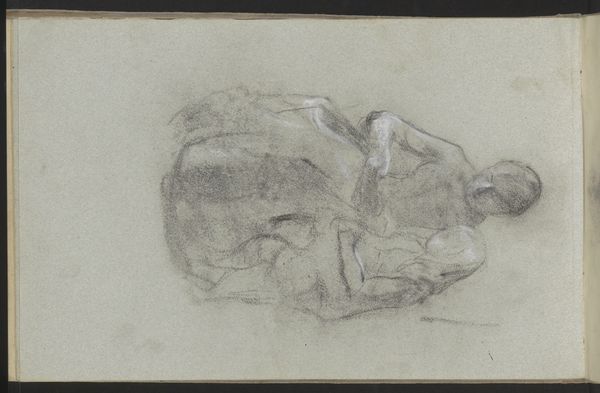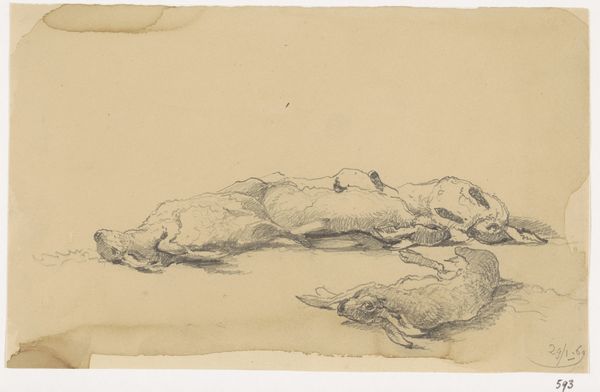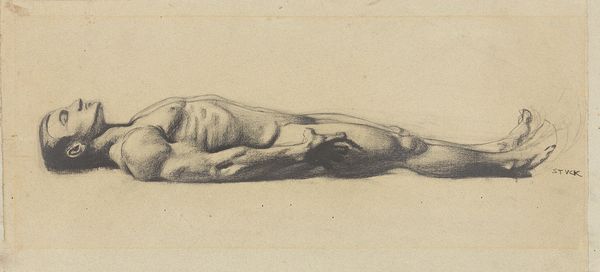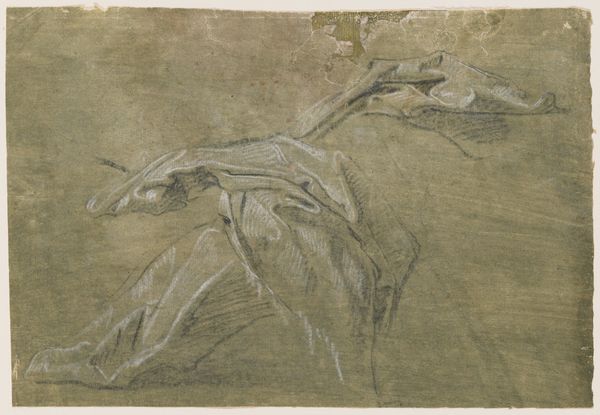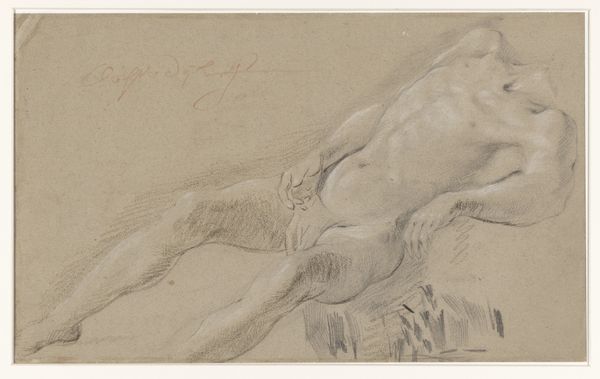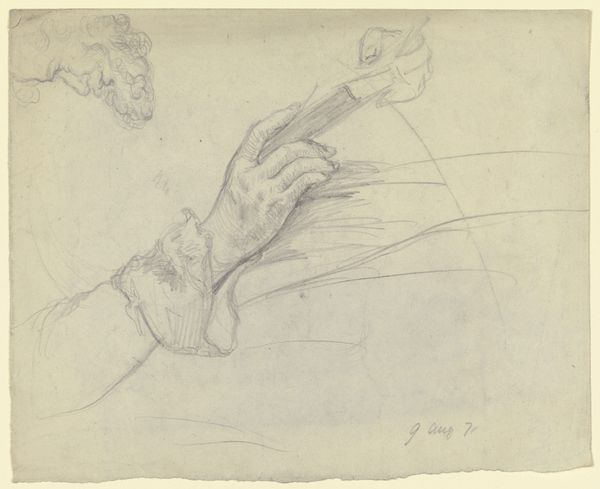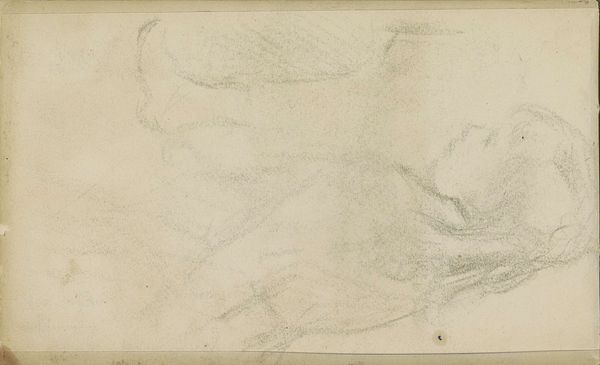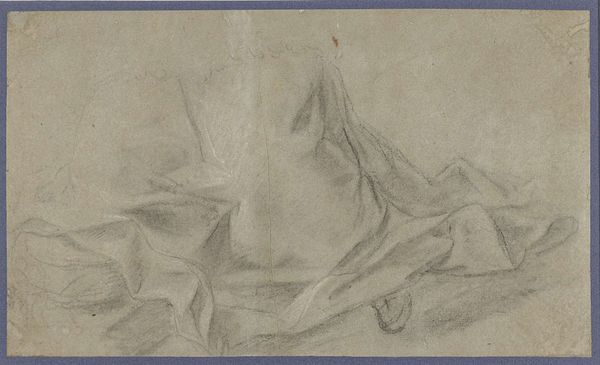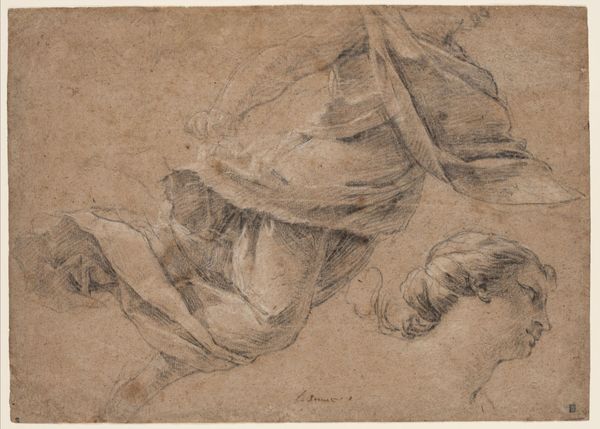
drawing, pencil
#
pencil drawn
#
drawing
#
toned paper
#
light pencil work
#
pencil sketch
#
charcoal drawing
#
figuration
#
pencil drawing
#
underpainting
#
detailed observational sketch
#
romanticism
#
pencil
#
nude
Dimensions: height 156 mm, width 252 mm
Copyright: Rijks Museum: Open Domain
Curator: This pencil drawing by Eugène Delacroix, titled "Liggende naakte man; zijn been nog eens afzonderlijk"—which translates to "Reclining nude man; his leg separately"—was created sometime between 1808 and 1863. Editor: My immediate impression is one of fragmented beauty—like glimpsing a statue emerging from mist. There's a raw honesty in the separate study of the leg, isn't there? It feels less like a finished piece and more like a private, almost vulnerable, observation. Curator: Indeed. The "toned paper," as noted, offers a ground that isn't merely neutral but active, participating in the chiaroscuro that defines the figure. We see the light not just on the skin, but emanating from the paper itself, a soft, almost ethereal illumination. Editor: Absolutely! The romantic spirit is clear as day, a palpable melancholy. The detached leg almost suggests a classical fragment—the ruin of some great, heroic form—but also it looks pretty functional. Curator: Functionality is pertinent. Delacroix employs line weight not simply to define contour, but to delineate the stresses and volumes inherent in the musculature. Consider how the heavier lines around the back and shoulders give way to lighter, more suggestive marks defining the face. Editor: There is real drama in this apparent simplicity. You said romantic... I see a kind of Byronic hero—fallen, contemplative, and still damn sexy even in his languor! The composition feels restless and unresolved. Even the additional study of the leg lends a certain completeness to the incompleteness. Curator: It encapsulates Romanticism's valorization of the sketch—the generative moment of artistic thought—over the polished, finished work. By showing the leg separately, Delacroix calls our attention to his process of observation and the decisions he makes. It acknowledges and highlights his thought process. Editor: This work feels refreshingly free from any of that heavy historical baggage. Curator: Precisely. It's a moment of unadulterated study, a private glimpse into the artist's meticulous mind, before the grand narratives took hold. Editor: Before all that grandeur took over, it gives me a deeper appreciation of how carefully Delacroix considered not just the 'what' of a subject but also the 'how'.
Comments
No comments
Be the first to comment and join the conversation on the ultimate creative platform.
